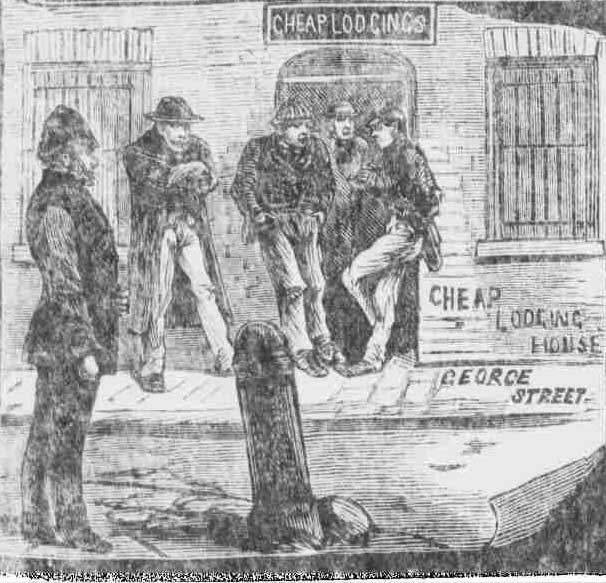George Street was one of the thoroughfares between Brick Lane and Commercial Street that had extremely bad reputations for vice and villainy around the time of the Jack the Ripper murders.
Indeed, the first two Whitechapel Murder victims, Emma Smith and Martha Tabram, were both residing in George Street at the times of their murders.
Emma Smith was attacked by a local gang in Osborn Street in the early hours of the morning of Easter Tuesday, the 3rd of April, 1888, albeit she survived the brutal assault she had been subjected to and managed to stagger back to the lodging house that she was living in in George Street.
However, the previous November, a woman by the name of Emily Horsnail (her name was also spelt as Horsnell), who also resided in George Street, had been attacked under circumstances that bore a chilling similarity to the attack on Martha Tabram.
The Weekly Dispatch (London) took up the story of her attack in its edition of Sunday, 20th November 1887:-
A WOMAN KICKED TO DEATH
“On Saturday morning, Mr. Wynne E. Baxter, coroner, held an inquiry at the Weavers’ Arms Tavern, Baker’s-row, Whitechapel, relative to the death of Emily Horsnail, twenty-four, the wife of a cabinetmaker.
Mrs. Ekins identified the body of the deceased as that of her sister, who had not been living with her husband for the last three or four years.
The deceased acted as charwoman, or anything else she could do, for a living.
She had appeared to have good health.
SHE WAS AN UNFORTUNATE
Eliza Ryan, 19. George Street, Spitalfields (a common lodging-house), said that the deceased had lived there between three and four years, and habitually came home late.
She was an unfortunate.

FOUND DEAD IN BED
The witness saw her on Thursday morning, and she was then in bed, and appeared to be dead.
The deceased had previously complained to witness of sickness. She said, “Oh, Eliza, I am very ill. I had a severe beating on Saturday night.”
On the Monday night, the deceased was too ill to go out, and complained of feeling pains about the ribs and stomach. She did not say how she got her ill-usage
When the witness found her, a doctor was at once sent for, and he pronounced her dead.
DOUBLED UP IN PAIN
John Satchell, the keeper of the lodging-house, said that he saw deceased on the Wednesday night when she was in the corner of the room in a doubled-up position.
She told him that she had been kicked about the stomach by some men whom she did not know.
When the deceased came home on Saturday night she had been drinking.
NO POLICE INQUIRIES
The Coroner:- “Have the police made any inquiries?”
A Sergeant:- “Not at present, Sir.”
The Coroner:- “Then you had better begin.”
DEATH DUE TO PERITONITIS
Dr. J. Dukes said that when he was called to the deceased he found her dead, and had she had been so for three or four hours.
She was lying on her side, with her legs drawn up to her stomach.
He found marks of several bruises down her right side. Her stomach was enormously distended, and must have had some severe blows or kicks to produce the bruises.
The distension was probably caused by peritonitis, or inflammation of the intestines, and she must have been ill for some days to have produced so much distension. Blows on the stomach probably caused that.
NO CLUE ABOUT THE CASE
The Coroner:- “Do you think, sergeant, that there will any clue about the case?”
The Officer:- “No. I don’t think so.”
AN OPEN VERDICT
The Coroner said that, had he known the facts of the case he should have ordered a post-mortem examination, but it appeared that nothing could come out of an adjournment.
The jury returned an open verdict.”
